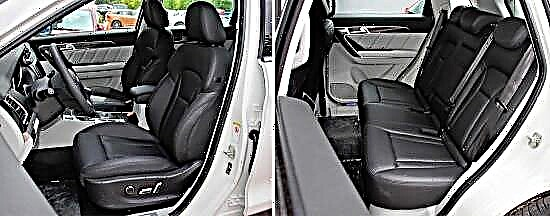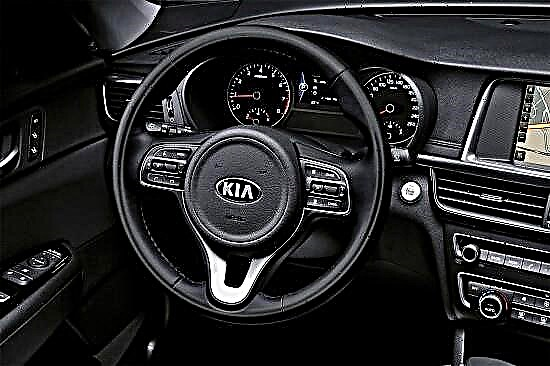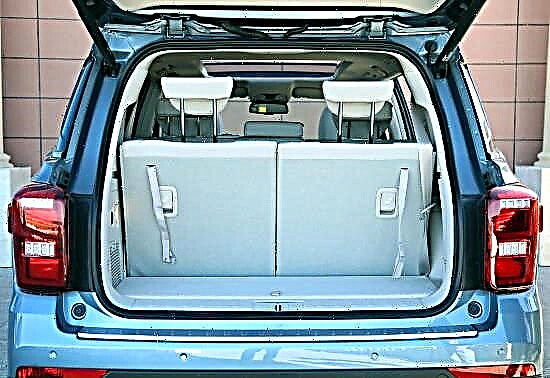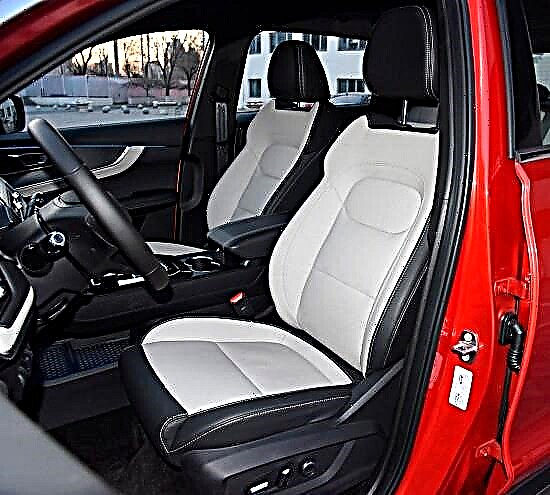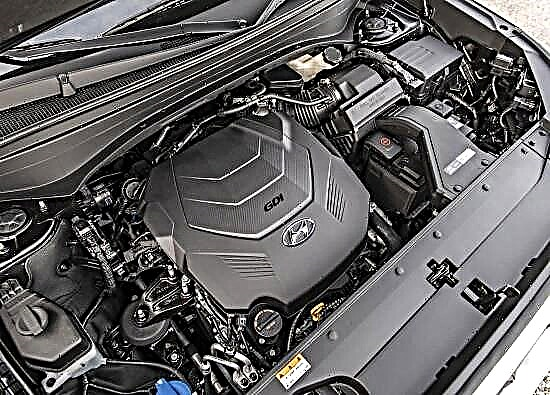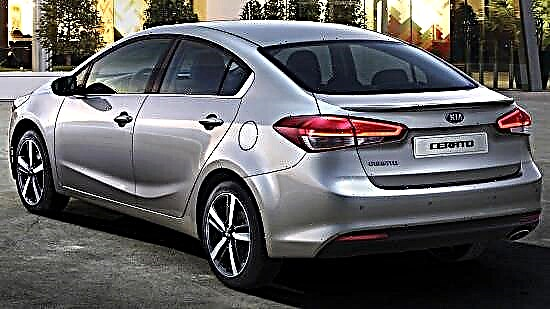Recently, few of the car shows do without another global premiere from Korean companies, and the Los Angeles exhibition, which took place at the end of November 2012, was no exception - on its stage, Kia organized the global debut of the Cerato compact sedan with the next, third in order. generation.
But by that time, the car, which surpassed the previous model in all directions, had already existed in the home market for itself under the name K3 for several months, but it only reached Russia in April 2013.

At the end of autumn 2015, the premiere of a restyled three-volume was held in South Korea, the release of which took more than a year to enter the Russian space (due to the certification of the ERA-GLONASS emergency notification technology).
But the metamorphoses were not limited to this: the car was transformed externally (the lighting equipment, bumpers and radiator grill were corrected for it), received better finishing materials, acquired minor technical improvements and expanded its functionality with new items.

"Cerato" of the third generation has a modern and effective image - without exaggeration, but the car is one of the cutest representatives of the C-class. At the front of the sedan, attention is drawn to a complex bumper and menacing-looking headlights, merged together with the "family" radiator grille "mouth of the tiger", and its strong rear with a "dude" spoiler on the trunk lid and beautiful filling of elongated lamps adds to the appearance of folding completeness.
In profile, thanks to the expressive folds on the sidewalls, the elegant "take-off" of the window sill line and the dashing "fall" of the roof, the "Korean" evokes associations with "four-door coupes", and the rear, as if slightly raised up, makes the silhouette even more impetuous and wedge-shaped.

The length of the "third" Kia Cerato is 4560 mm, and its wheelbase does not exceed 2700 mm. The width and height of the four-door are 1780 mm and 1445 mm, respectively, and the clearance under its bottom is 150 mm. The "combat" weight of the car, depending on the modification, ranges from 1178 to 1321 kg.

The interior of the Korean sedan looks attractive, balanced and sound like a European, and it practically does not smell of Asian. With ergonomics and the level of assembly, the three-volume is in complete order, but the materials used in some places are frankly tough.
The center console is occupied by a 4.3-inch infotainment system and an exemplary climate control unit, and behind the exquisite multifunction steering wheel is a stylish, informative and elegant Supervision instrument cluster with a 4.2-inch TFT display. But in fairness, it should be noted that the basic configuration is content with only a simple radio tape recorder, "instrumentation" with a monochrome display, three air conditioner controls and a less noticeable "steering wheel".

Comfortable seating in the front seats in "Cerato" allows dense seats with tangible support on the sides and decent intervals of adjustment. The second row of seats is able to accommodate three people without any problems, the benefit of this is the optimal shape of the sofa and the slightly protruding floor tunnel, however, tall passengers may feel discomfort due to the "collapsed" roof.
The trunk of the third generation Kia Cerato has far from the most thoughtful geometry, which is compensated by a decent volume - 482 liters in standard condition. The back of the "gallery" folds in a ratio of 60:40, forming only a slight rise, and a spare wheel and a convenient organizer with tools are located under the floor.
Specifications. For the third generation of KIA Cerato, Korean developers have stocked up the already well-known to the general public gasoline engines of the Gamma and Nu lines, but at the same time both units have undergone significant improvements, bringing them to a completely new level of quality. The use of modern materials made it possible to reduce the weight of the motors by 30%, and various technological innovations gave at least a small increase in power and torque. The economy has also increased, but first things first ...
- The basic power unit for the front-wheel drive sedan "Serato 3" is a 4-cylinder engine with a working volume of 1.6 liters (1591 cm³). This 16-valve engine is now capable of producing up to 130 horsepower at 6300 rpm. The engine torque peaks at around 157 Nm and is reached at 4850 rpm.
It is aggregated either with a 6-speed manual transmission or with a 6-range automatic transmission. In the case of the "mechanics", the triple-box is capable of accelerating to a maximum of 200 km / h, while taking no more than 10.1 seconds for the starting spurt from 0 to 100 km / h. Fuel consumption in urban driving conditions will be about 8.7 liters, on the highway it will drop to 5.2 liters, and in mixed driving mode it will fluctuate at 6.5 liters. The choice in favor of the "machine" will slightly reduce the dynamic characteristics. With an automatic transmission and a 1.6-liter engine, Cerato will only accelerate to 195 km / h, while squeezing the first hundred in 11.6 seconds. Fuel consumption figures will also worsen: in the city - 9.1 liters, on the highway - 5.4 liters, and in mixed mode - 6.8 liters. - The older engine, belonging to the Nu line, has the same: 4 cylinders and 16 valves, but the displacement is 2.0 liters (1999 cm³). The maximum developed power of this motor is 150 "mares" at 6500 rpm. The torque was raised by the efforts of Korean engineers to the mark of 194 Nm at 4800 rpm, which made it possible to increase the speed qualities of the third generation of Cerato: the maximum speed is now 205 km / h, and the starting acceleration time from 0 to 100 km / h does not exceed 9, 3 seconds. A manual transmission is not offered for this power unit, the manufacturer limited itself to only a 6-speed "automatic". As for the efficiency of this option, the average level of gasoline consumption in urban conditions will be about 10.2 liters, on the highway the power unit is more economical - 5.4 liters, but in a mixed mode of movement it will spend about 7.2 liters.
The preferred brand of fuel for both engines is AI-95 gasoline.
Now a little about the chassis. The third generation KIA Cerato has a stiffer steel monocoque body than its predecessor, to which a front independent suspension based on MacPherson struts and a rear architecture based on a CTBA (Coupled Torsion Beam Axle) torsion beam are attached. The front wheels are equipped with ventilated disc brakes, and non-ventilated discs are installed on the rear axle. In the basic equipment of the car, the braking system is supplemented only by ABS, but in more expensive trim levels, stability control (ESC), active control (VSM), emergency braking warning (ESS), hill start assist (HAC) and emergency assistance become available. braking (BAS).
The sedan's rack and pinion steering is complemented by a shaft-mounted electric power steering. In addition, the three-volume "flaunts" the Drive Mode Select system with three modes (Normal, Sport and Eco), which allows you to vary the effort on the "steering wheel" and change the complex settings of the power unit and "automatic".
Options and prices. The restyled Kia Cerato 2017 model year appeared on the Russian market in December 2016 and, pleasantly, did not add much in price. The car received slightly revised configurations. The updated sedan is sold in our country in the “Comfort”, “Luxe”, “Prestige” and “Premium” solutions, and its cost starts at 952,900 rubles.
In the "base" the car has only the most necessary minimum: two front airbags, 16-inch steel wheels, a radio with four speakers, air conditioning, front power windows, power steering, ABS, electric drive and heated exterior mirrors and an on-board computer.
A four-door with automatic transmission is offered at a price of 997,900 rubles, for a car with a 2.0-liter engine they ask for 1,074,900 rubles, and a "top modification" will cost no less than 1,234,900 rubles. The maximum "packed" version has six airbags, ESP, dual-zone "climate", multimedia with a color screen and six columns, a rearview camera, a Supervision dashboard, bi-xenon headlights, heated front and rear seats, parking sensors, engine start with buttons, electric folding mirrors and a bunch of other modern equipment.

